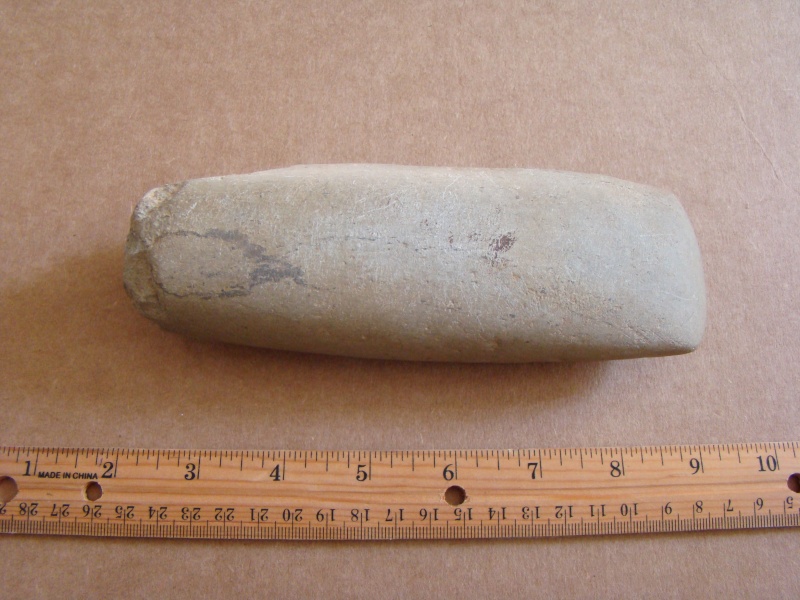R&R
Admin

Posts : 141
Join date : 2009-08-30
Location : South Carolina
 |  Subject: I. Celt Subject: I. Celt  1/5/2010, 3:43 pm 1/5/2010, 3:43 pm | |
| CeltThe celt is essentially an axe or wood-working tool with a hatchet-like cutting edge. The celt does not have a groove or other modifications for mounting, but was inserted into a socketed wooden handle. Some specimens still mounted on their original wooden handles have actually been preserved, and monolithic axes show mounted celts. Celts are made of various kinds of stone, usually of an igneous or metamorphic rock although softer stones such as limestone, sandstone, or others were sometimes used. The stone was worked by a pecking process to roughly shape the artifact which was finally completed by hand-grinding and smoothing of the surface with a suitable abrasive stone. There is considerable variation in the amount of work represented by different specimens. Some have been carefully shaped and polished all over the entire surface while others are sometimes poorly crafted with only the wedge-shaped cutting edge receiving much attention. Celts also vary considerably in shape. They are generally wedge-shaped at one end, the main body of the artifact having an outline that ranges from triangular to ovate or rectangular form. The basal section tends to be rounded but may also be quite pointed or even rectangular and blunt. Cross sections also vary from a rather thin lens-shaped section to one which is thick and round in section. Such differences in celt forms partly reflect different groups or different localities, as those found in some archaeological assemblages are quite uniform in style. Celts also vary considerably in size. Small celts made of black hematite are frequently less than 40 mm in length, but large stone celts measuring over 200 mm in length also occur. Most commonly, however, celts found in Oklahoma will measure between 80 and 160 mm in length. The celt is represented in all time periods except the Paleo-lndian. It appears to become less frequent in later periods associated with agriculture. By Caddoan times (Spiro phase) the celt appears to have functioned less and less as an axe and more as a fighting weapon or symbol of authority and power. Source: http://www.ou.edu/cas/archsur/OKArtifacts/celt.htm---------------------------------------------------------------------------------- Item Information| Object Name/Title: | Celt | | Catalog Number: | SAPR 001 | | Classification: | History/Native American | | Artist/Maker: | | | Eminent Figure/Organization: | Creek Indian Tribe | | Place of Manufacture: | North America | | Medium/Materials: | Stone | | Measurements: | 170mm long x 60mm wide x 50mm high / 1lb 14oz. | | Date Manufactured: | | | Use Date: | | | Historical/Cultural Period: | Native American | | Cultural ID: | | | Key Descriptor: | Celt, Native American, Creek, Muskegee | | Description: | Stone that has been angled on one end to mimic that of an axe. Stone is light brown/gray. Non-pointed end broken off. |
  | |
|




